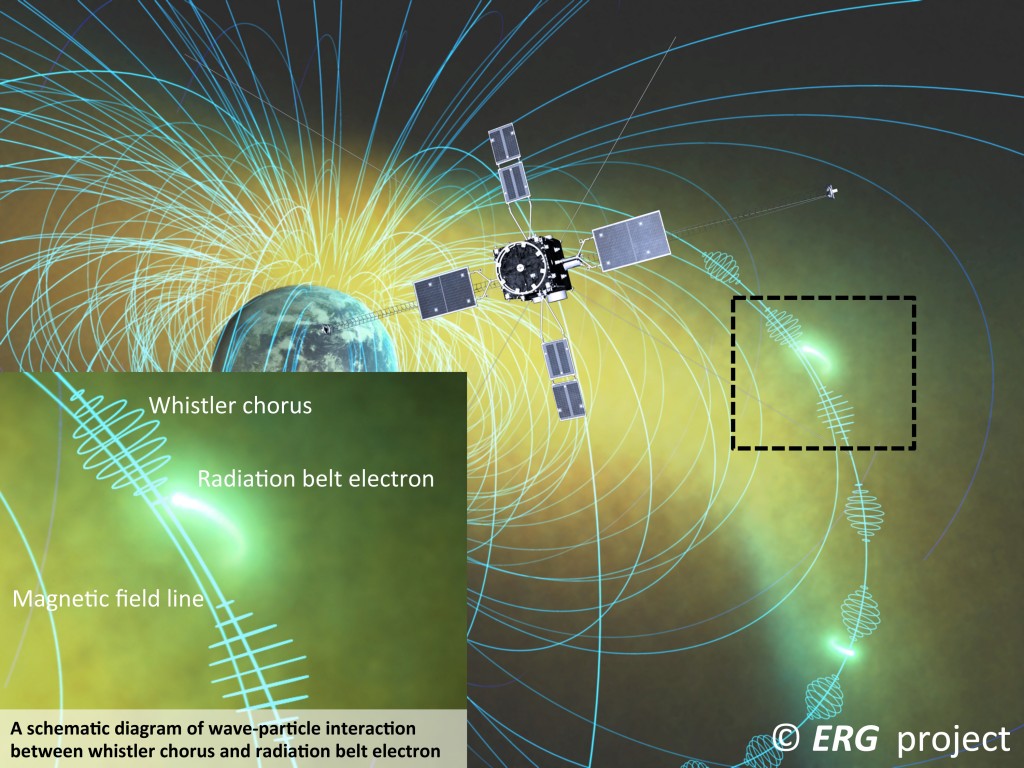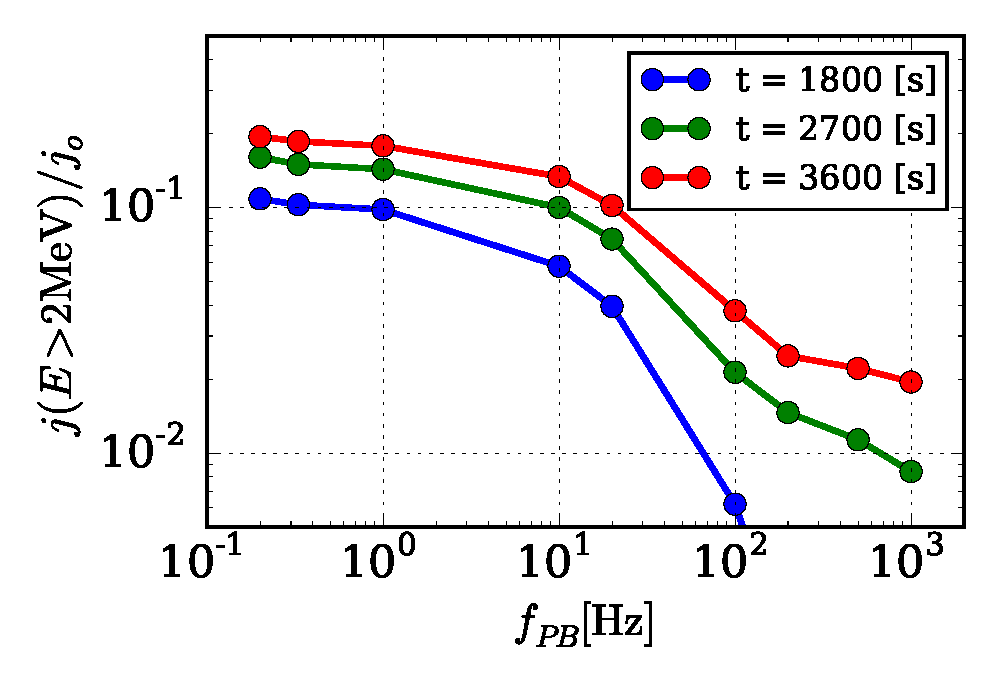Shinji Saito (Nagoya University)
Radiation belt electron flux in the geomagnetic field exhibits dynamic variability over several orders of magnitude during geomagnetic storms. Whistler chorus waves, which are a coherent nonlinear wave, are considered as a cause of the dynamic variability of the electron flux through resonant interactions between radiation belt electrons and the wave. While theoretical models so far for the dynamic variability of electron flux has assumed quasi-linear diffusion process which is a stochastic process as a diffusion manner of successive random-phase interactions, a nonlinear phase trapping process has been recently proposed as a cause of rapid flux enhancement of radiation belt electrons. The phase trapping nonlinearly accelerates electrons in a short time scale (~1 s), which is not incorporated in the quasi-linear diffusion model. However, only few electrons are accelerated by the phase trapping process. Thus, one may consider that the phase trapping is not essential for the flux enhancement, especially over the time scale of a geomagnetic storm. However, this consideration is not trivial. In order to evaluate the role of phase trapping process for the flux enhancement especially at MeV energies, numerical simulations that calculate wave-particle interactions in the geomagnetic field are required.
We study wave-particle interactions in a dipole magnetic field line by using GEMSIS-RBW simulation code which solves guiding-center adiabatic motion of electrons in the field line and non-adiabatic momentum changes associated with applied whistler wave fluctuations propagating along the field line. We compare electron scattering in coherent whistler waves which lead to the phase trapping with incoherent whistler waves which suppress the phase trapping. Our simulations show that coherent whistler waves more efficiently accelerate 400 keV electrons than incoherent whistler waves. The flux enhancement at over 2 MeV by coherent whistlers is about 10 times higher than incoherent whistlers.
It is implied that traditional diffusion models do not always describe the net flux enhancement of the outer radiation belt properly. We expect that the contribution of the phase trapping process, which is not described by the diffusion model, can be contributed to the rapid increase of the relativistic electron flux in the radiation belt. This result would be important to improve physics-based radiation belt flux prediction which is a aim of PSTEP project.
Saito, S., Y. Miyoshi, and K. Seki (2016), Rapid increase in relativistic electron flux controlled by nonlinear phase trapping of whistler chorus elements, J. Geophys. Res. Space Physics, 121,6573–6589,
doi:10.1002/2016JA022696.
http://onlinelibrary.wiley.com/doi/10.1002/2016JA022696/full

Figure 1: A schematic diagram of wave-particle interaction between whistler chorus and radiation belt electron. Lines coming from the Earth show magnetic field lines. A lower-left panel which enlarged inside of a black dashed line shows wave-particle interaction between whistler chorus and electron on the field line. As a phase trapping, which is a nonlinear scattering process, occurs during the interaction, an electron with several hundreds keV energy is accelerated into a few MeV energy within a few seconds. A satellite located at the center of this figure shows “Exploration of Energization and Radiation in Geospace ERG” that will be launched in FY2016. The ERG satellite can observe details of dynamics of radiation belt electrons and whistler chorus waves. This study aims at understanding acceleration mechanism of radiation belt electrons by comparing the observed data with simulation results.

Figure 2: Dependence of f_{PB} on >2MeV electron flux enhancement at t = 1800 s (Blue), 2700 s (Green), and 3600 s (Red). f_{PB} is a frequency with which an electron interacts with whistlers of random relative phase. Higher f_{PB}s suppress nonlinear phase trapping more effectively. At t = 3600 s, increased flux at f_{PB} = 0.2Hz is about 10 times higher than at f{PB}=1kHz where the nonlinear phase trapping is almost completely suppressed. It suggests that the nonlinear phase trapping process has an important role to increase relativistic electron flux.
